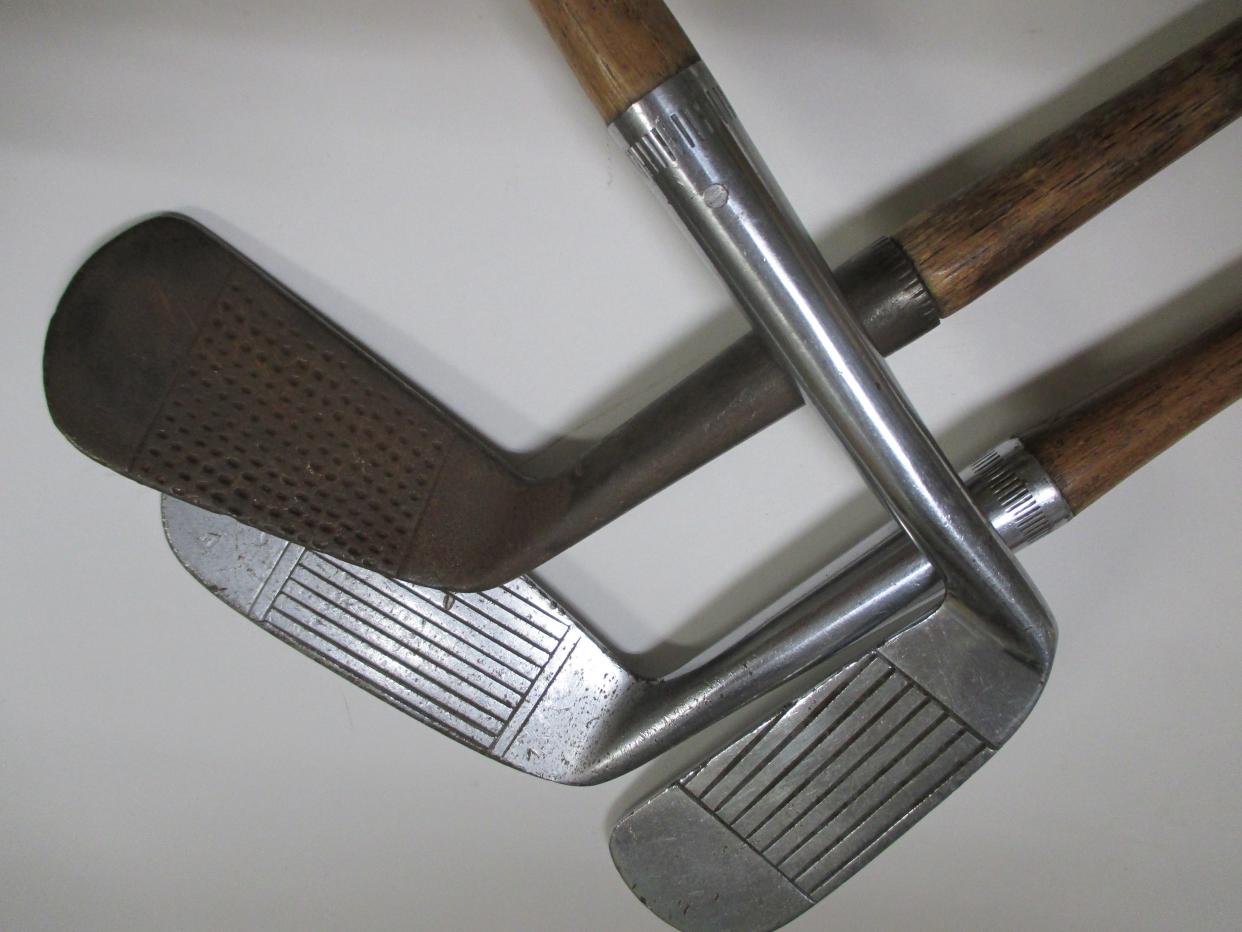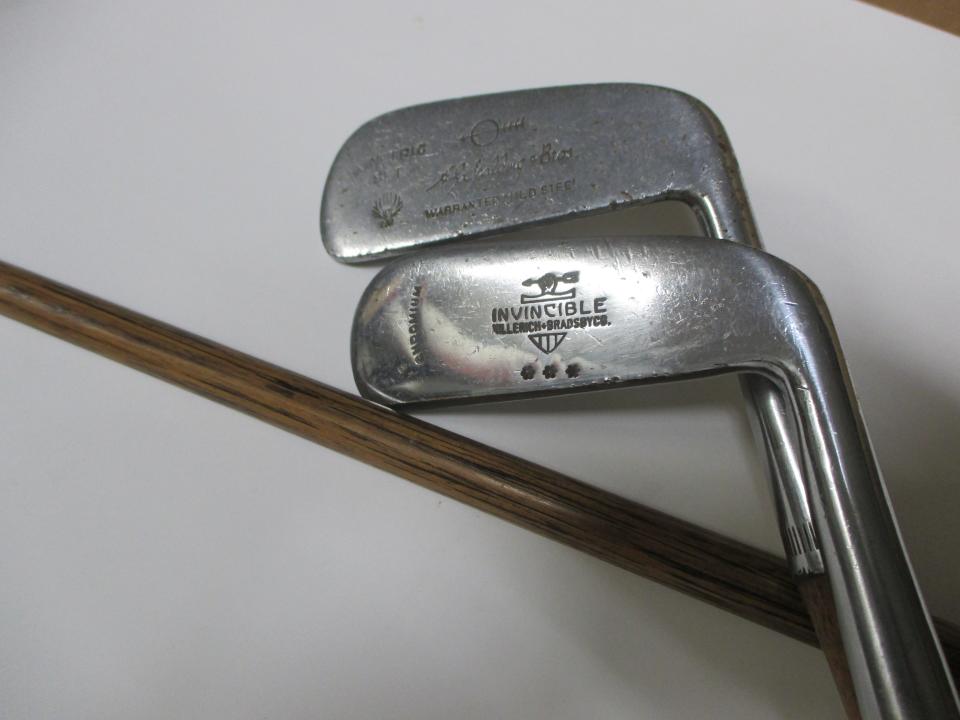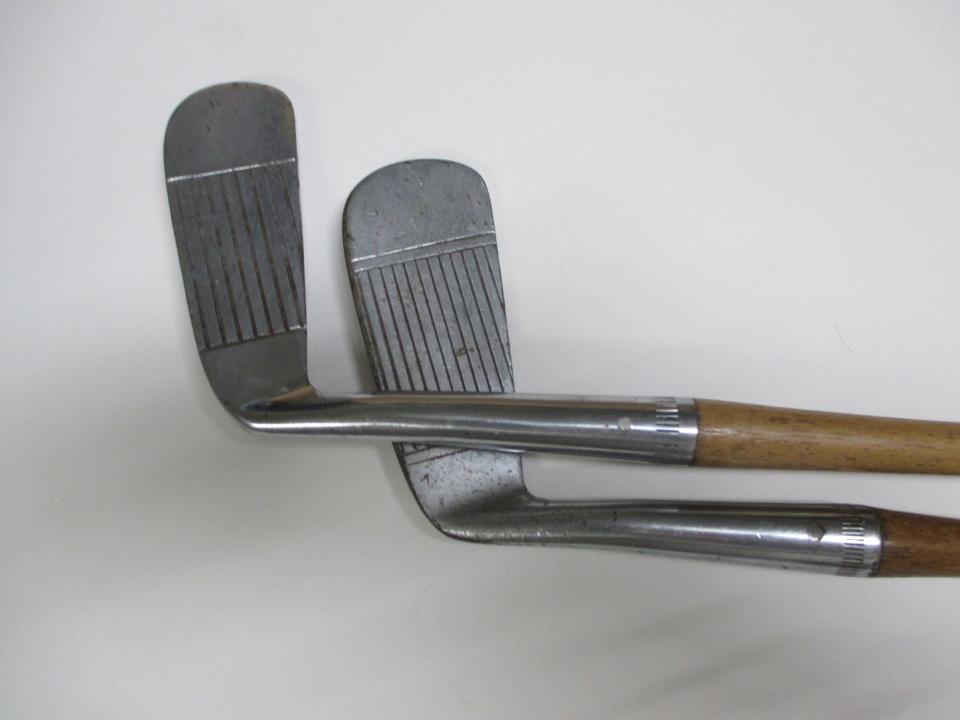Antiques: Golf clubs of yore

With the U.S. Open concluding last weekend, this column might be thought by some to be a trifle late. Nonetheless, and despite the fact that summer heat is already making local golf a pre-breakfast pursuit, the passion for golf here in the desert is year-round. It better be, since our 120-plus desert courses and dozens of golf shops don't just dry up and blow away when it gets hot.
And while most duffers gravitate to the latest and greatest in balls, bags and sticks, there are some traditionalists who collect and even use the wood shaft golf clubs of yore. Frankly, any time you can poke technology in the eye, I'm all for it. Thus, let's take a chip shot at when hicktory was the rule.

The first surprise is that golf is probably a lot older than you think. While historians are divided on some aspects of its origin, there is little doubt that it began in the 15th century in Scotland. The earliest versions seem little more than bored Highlanders taking turns whacking rocks to and fro with curved sticks.
Over the years, this peculiar pastime turned into a codified sport, pursued by kings and queens alike. In 1682, the first international match was held near Edinburgh, pitting two Scotsman against a pair of English noblemen. The Scots won, a result that no one in Scotland has forgotten since.
As for their clubs, they were handmade with heads of beech and shafts of hazel or ash. Beech is an unusually crush-resistant wood, able to survive impacts that would shatter other woods. It's also easily bent and formed, thus allowing for relatively easy crafting with a minimum of tools.

Ash and hazel have similar stiffness and shock-resistance but are notable for their high strength-to-weight ratios ratios. Still, it wasn't long thereafter that the first iron club heads came into being around 1750. Known as wedges or "niblicks," they offered considerable increases in driving distance when paired with the more durable American hickory shafts.
For the next 150 or so years, basic golf club design remained largely the same. The most significant changes came in the early 20th century when grooves were introduced on the club heads to allow for backspin and steel shafts replaced hickory in 1929 when the Royal and Ancient Golf Club of St. Andrews — golf's governing body — allowed for their use.
After the U.S. Open was won in 1931 by Billy Burke using steel shaft clubs, the use of hickory all but disappeared. As for the first non-wood wood, that distinction goes to TaylorMade with its introduction of the dubiously named Metalwood in 1979. Since then, all kinds of space-age materials have been used in club design, undoubtedly adding to golfer performance while diminishing the sport's unique charm and character. That's my opinion anyway.
All the same, the fact remains that original wood-shaft golf clubs are still fairly easy to find and can be brought back to their original bristol condition with a modicum of work. A little sandpaper and varnish will usually do the trick, and a variety of grip tapes are available from any golf shop.
We have a range of old clubs on hand as do many other antique dealers, and it's always a pleasure to hear of a golfer's intention to restore one to its former glory. Your computer is tech, your phone is tech, your car is tech, your life is tech. Why not invest a few bucks and a little elbow grease to put history back into your golf game? It may not help your score, but it might do great things for your outlook.
Mike Rivkin and his wife, Linda, are longtime residents of Rancho Mirage. For many years, he was an award-winning catalogue publisher and has authored seven books, along with countless articles. Now, he's the owner of Antique Galleries of Palm Springs. His antiques column appears Sundays in The Desert Sun. Want to send Mike a question about antiques? Drop him a line at info@silverfishpress.com.
This article originally appeared on Palm Springs Desert Sun: Antiques: Golf clubs of yore

